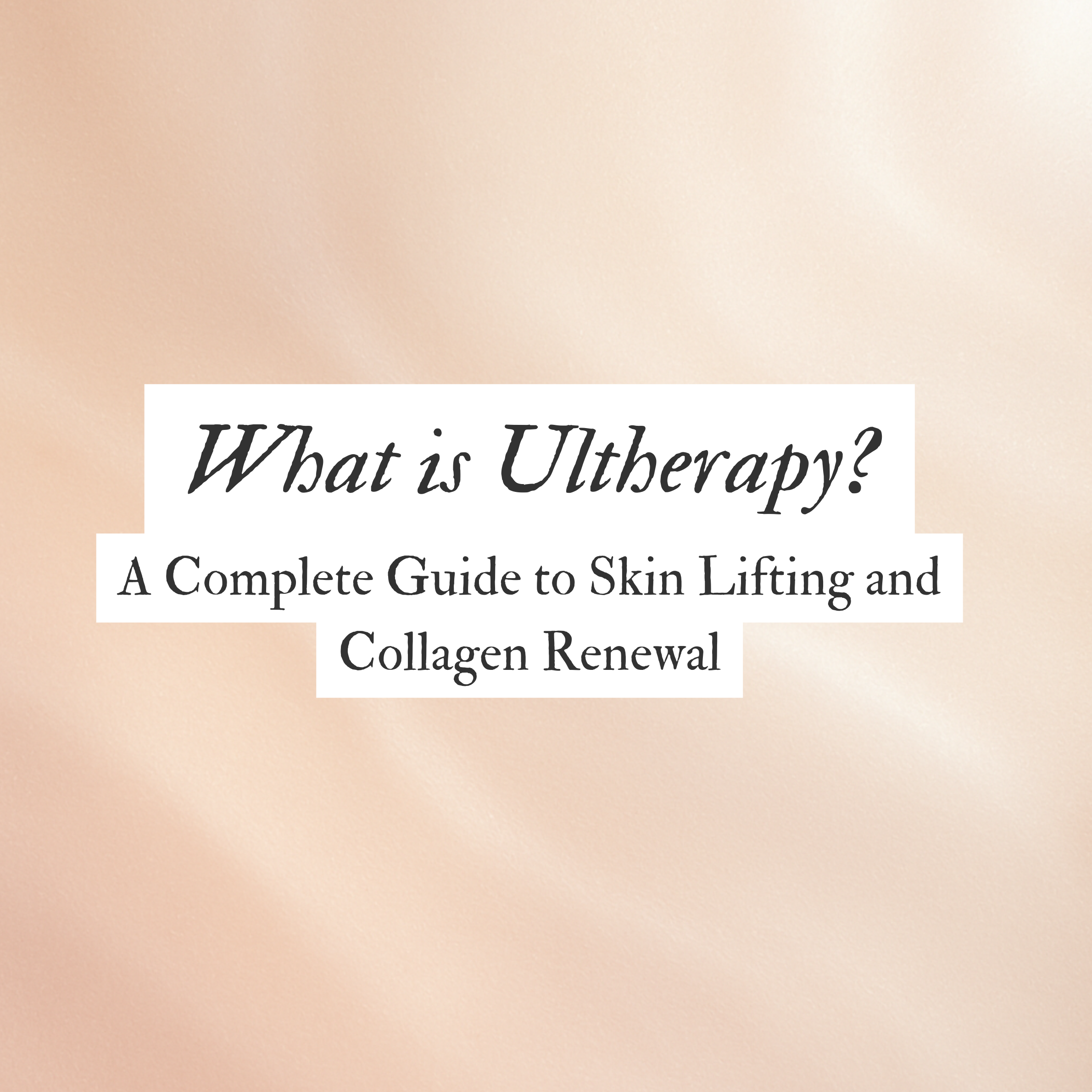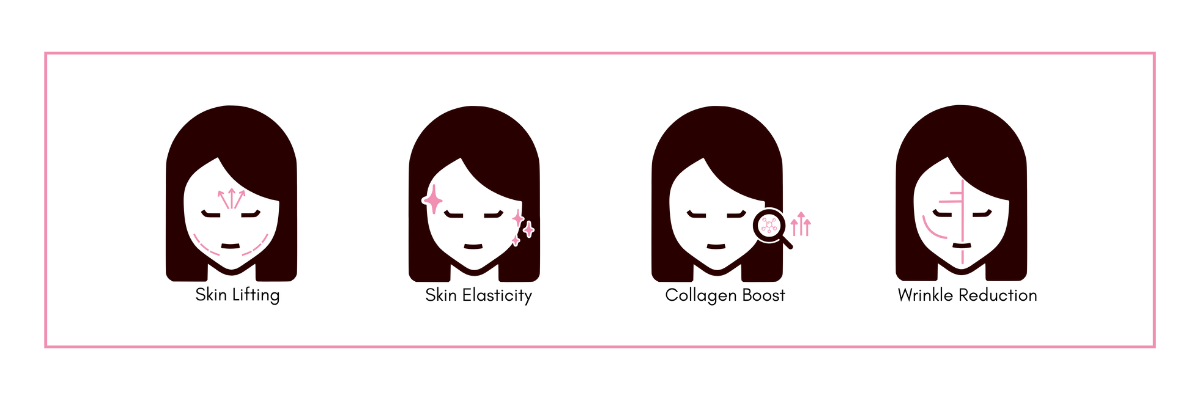
What is Ultherapy? A Complete Guide to Skin Lifting and Collagen Renewal
Considering a new skin treatment can bring many questions, which is completely natural. If you are exploring ways to maintain your skin’s strength without surgery, Ultherapy may be worth learning more about. This guide will help you understand what it involves and how it may fit into your skin journey.
What is Ultherapy?
Ultherapy is a non-invasive treatment often recognized as one of the best treatments for sagging skin. It uses focused ultrasound energy to gently reach the deeper layers of your skin, including the SMAS layer that provides firmness and lift. With real-time imaging, energy is delivered precisely to stimulate natural collagen and elastin production. Over time, this process helps the skin look firmer, smoother, and more lifted without surgery or lengthy recovery.
Commonly treated areas include the brow, cheeks, jawline, neck, and chest. Results appear gradually within two to three months and may last up to a year. Because it works with your body’s natural renewal, improvements look subtle, authentic, and naturally refreshed.
Expert Insights
“Ulthera delivers ultrasound energy deep into the skin layers. This is a treatment that improves skin elasticity and collagen production.”
— Dr. Dong-Hyeon Yoon, Director of Edit Plastic Surgery Clinic

Benefits Ultherapy
1. Non-surgical facelift treatment with no downtime
2. Natural lift and improved firmness in the brow, jawline, and chin
3. Gradual softening of fine lines and wrinkles
4. Results that continue to improve for months
5. A refreshed look that still feels like you
Risks and Side Effects of Ultherapy
When performed by qualified professionals, Ultherapy is generally a safe treatment. Some people may experience temporary effects such as redness, mild swelling, or tingling, which usually settle within a few days. In rare cases, slight bruising or numbness can occur but these effects typically fade on their own.
Ultherapy may not be the best option for those with advanced skin laxity or specific health concerns, which is why a professional consultation is an important step before beginning treatment.
Is Ultherapy Treatment Right for You?
Since every skin is different, starting with an AI Skin Analysis can help you understand your skin type first and see if Ultherapy is the best fit for your needs.
Ideal Candidates
Ultherapy is best suited for:
→ People with less defined jawlines or neck contours
→ Individuals with deep smile lines or drooping cheeks
→ Those who prefer to avoid surgical procedures
→ Busy individuals who want minimal recovery time
→ Individuals seeking natural-looking results without surgery
Who Should Avoid Ultherapy
Ultherapy may not be suitable for
→ Sensitive skin: Try to avoid, but taking a certain dosage is fine
→ Individuals with very loose or advanced skin laxity
→ Those with open wounds, severe acne, or active skin infections
→ Individuals with medical conditions that affect healing or collagen production
→ People with metal implants, pacemakers, or other electronic devices in the treatment area
→ Anyone seeking immediate, dramatic, or surgical-level results
Ultherapy for Your LuluTI Skin Type: Who Sees the Best Results
Ultherapy is great for people with wrinkles and loss of elasticity, so it’s perfect for early signs of aging. While its primary purpose is to lift and tighten, it can also support improvements in rough or uneven skin texture by stimulating new collagen.
From Lululab’s perspective, Ultherapy is best for skin types with a “W” (Wrinkle/loss of firmness) profile. It may also offer some secondary benefit for those with a “T” (Texture) profile, though its primary impact remains on lifting and tightening.
Best Matches: WATP, WUTP, WATC, WUTC, WUSC, WUSP, WASP, WASC
Also Beneficial: EATP, EATC, EUTC, EUTP (firm skin with texture concerns).
Even if you have an "E" (Elastic) profile and firm skin, Ultherapy can be a preventive measure to maintain collagen, preserve firmness, and delay sagging.
To see if Ultherapy is right for you, get a Lululab AI Skin Analysis. It will give you a clear understanding of your skin condition and help you find the best treatment for you.
What to Expect After Ultherapy: Timeline and Results
Ultherapy works gradually, so changes appear naturally over time rather than all at once. This makes it easier for results to blend seamlessly with your features.
▶ Immediately after treatment:
Many people notice their skin feels a little tighter right away. It is common to experience mild warmth, slight redness, or tenderness in the treated areas, which usually fades within a few hours to a few days. You can return to your normal routine right after the session.
▶ 1 to 3 weeks:
Your skin begins its natural healing response as new collagen activity starts. At this stage, early improvements may appear subtle, such as smoother texture or a more refreshed look.
▶ 2 to 3 months:
Collagen production becomes more active, leading to visible lifting and increased firmness. Areas like the jawline, cheeks, or neck may show clearer definition as the treatment results gradually build.
▶ 6 months and beyond:
The most significant changes are typically seen around this time. Full results reveal a natural-looking lift and stronger skin structure, with improvements that can continue to evolve for up to a year, depending on your body’s collagen response.
Ultherapy Aftercare: Tips for the Best Results
After Ultherapy, your skin begins producing new collagen, and supporting this process is important for achieving the best results.
Use sunscreen daily: Protect the treated areas from sun exposure to prevent damage and support healing.
Keep yourself hydrated: Drink enough water and apply a quality moisturizer to maintain skin health during this renewal phase.
Avoid strong facial massages: Skip exfoliating scrubs and high-heat environments like saunas, as they can irritate the skin.
Balanced diet: Eat foods rich in protein and vitamins, practice light facial stretches, and maintain healthy lifestyle habits to boost collagen synthesis.
Ultherapy vs Thermage: Which Treatment is Best for You?
While both Ultherapy and Thermage are non-surgical treatments, they focus on different skin concerns. Ultherapy works deeper, making it better for lifting and definition in areas like the jawline, brow, and neck.
Thermage targets more superficial layers, helping smooth fine lines and improve overall texture. It is often chosen for eyelids or larger body areas. In short, Ultherapy is ideal for lift and contour, while Thermage is preferred for texture and elasticity.
Next Steps or Your Ultherapy Journey
If you’re ready to explore whether Ultherapy is the right match for your needs, we encourage you to check our partnered clinics for expert guidance and safe, tailored care. Taking this step can help you feel confident in your decision and begin your journey toward naturally refreshed skin.
Ultherapy FAQs: Everything You Need to Know Before Starting
1. Is Ultherapy painful?
Most people feel mild heat or tingling as the ultrasound energy is delivered. Any discomfort is temporary and varies by individual.
2. How long does Ultherapy treatment take?
A session usually lasts 30 to 90 minutes, depending on the area being treated.
3. Is there any downtime?
No. You can return to work or daily activities right after treatment.
4. When will I see results?
Some people notice a subtle lift right away, but the most visible improvements appear gradually over two to three months.
5. How long do results last?
Results can last about a year, depending on your skin’s condition and natural aging process.

